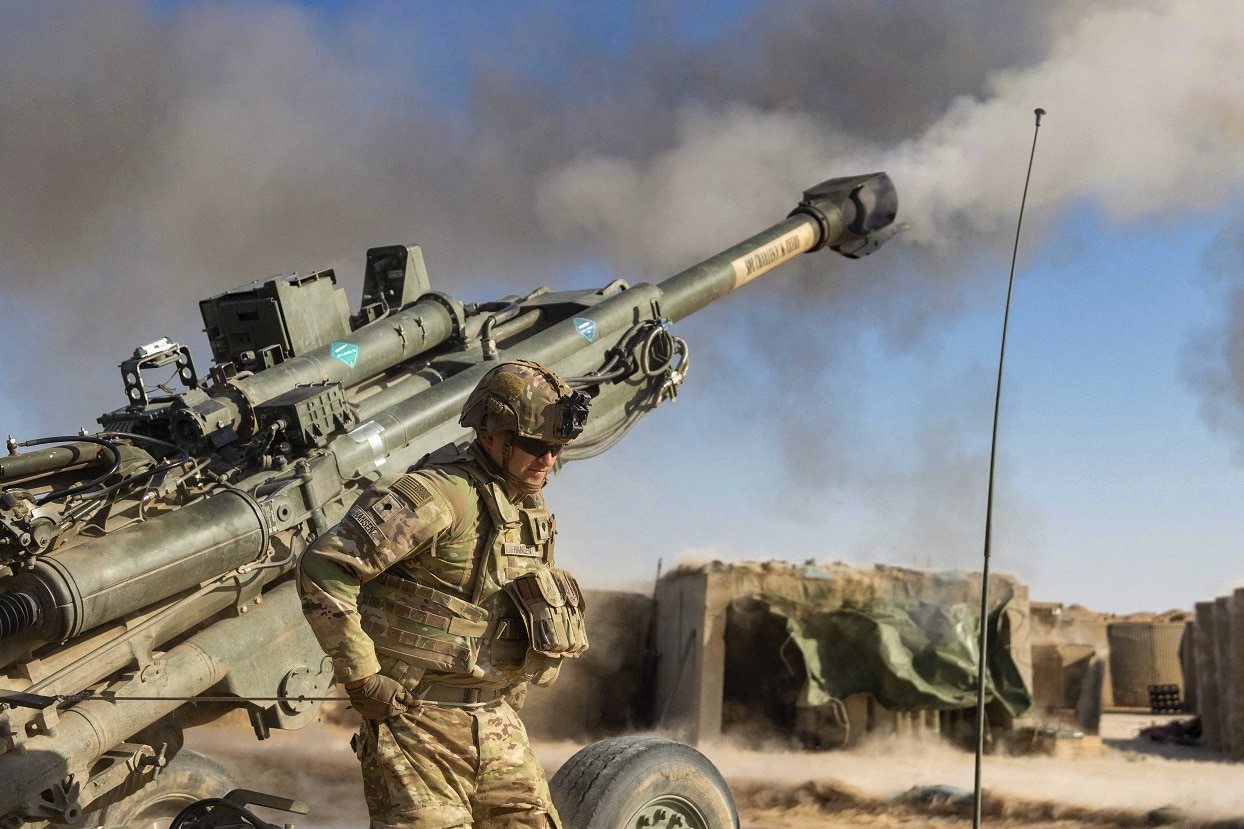A few days ago, the Pentagon activated a unit with an interesting nuclear history. On November 8, U.S. Army Europe and Africa reactivated the 56th Artillery Command in Mainz-Kastel, Germany.
During the Cold War, the 56th Artillery Command was responsible for the Army’s Pershing Field Artillery Missile Systems, a theater ballistic missile with a medium-range that could carry nuclear warheads and had raised much backlash in the local community and alarm in Moscow.
56th Artillery Command Meets Multi-Domain Fires
According to the Department of Defense, the 56th Artillery Command “will plan and coordinate the employment of multi-domain fires and effects in support of U.S. Army Europe and Africa” and any other combined joint force land formation.
“The reactivation of the 56th Artillery Command will provide U.S. Army Europe and Africa with significant capabilities in multi-domain operations. It will further enable the synchronization of joint and multinational fires and effects, and employment of future long range surface to surface fires across the U.S. Army Europe and Africa area of responsibility,” Major General Stephen J. Maranian, the new commanding general of the 56th Artillery Command, said in a press release.
Earlier in 2021, the Army had adumbrated the creation of two new units in Europe: The Multi-Domain Task Force and Theater Fires Command, which is now the 56th Artillery Command. The former is intended as a multirole unit composed of field artillery, composite air and missile defense, cyber, electronic warfare, aviation, intelligence, and space elements, while the latter is intended to improve readiness and multinational interoperability by integrating joint and multinational fires in exercises and operations.
U.S. Army Europe and Africa, a fairly new formation that combined the Europe and Africa area of operations together, supervises all conventional Army operations in those areas.
The establishment of the unit comes in a year of heightened tensions with Russia in Europe. In the spring, Moscow threatened war in Ukraine by amassing a large number of troops and materiel at the border with the East European country. And now, the Kremlin is doing the same again.
A Storied History
The 56th Artillery Command has a storied history that began in September 1942 during World War Two. Back then, the unit was a coastal artillery brigade, and it deployed in that role in Europe, where it saw active combat in Northern France, Belgium, Germany, and Austria.
Following the end of the war, the unit was deactivated, only to be reactivated in 1951 and then to be deactivated again ten years later in 1961. However, with tensions with the Soviet Union rising in Europe, the Army decided to reactivate the unit once more in 1963. During the Cold War, the unit became more important to Army commanders and was given command of the Pershing medium-range ballistic missile.
With the fall of the Berlin War and the dismantling of the Soviet Union came a drawdown of U.S. forces in Europe. As a result, the 56th Artillery Command was again deactivated in 1991 and remained in such a condition until this week.
1945’s New Defense and National Security Columnist, Stavros Atlamazoglou is a defense journalist specializing in special operations, a Hellenic Army veteran (national service with the 575th Marine Battalion and Army HQ), and a Johns Hopkins University graduate.

